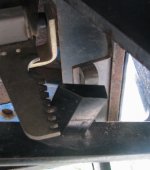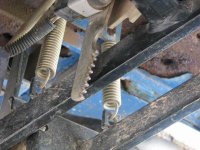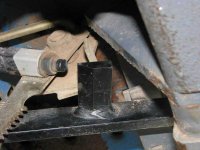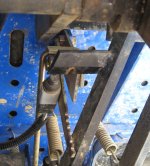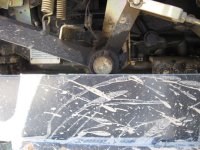jinman
Rest in Peace
- Joined
- Feb 23, 2001
- Messages
- 21,008
- Location
- Texas - Wise County - Sunset
- Tractor
- NHTC45D, NH LB75B, Ford Jubilee
Success! Well. . .sort of. I got two out of three clear pictures. The one with the pawl mated to the wedge is slightly out of focus, but you can still see that even on my tractor the fit is not perfect. As a matter of fact, the pawl is not perpendicular to the wedge. If it were twisted just a little, it would fit much better. Anyhow, you can clearly see that my pawl teeth are not worn and that my wedge has no V-cut in it. That really has me baffled. Now, I want some others folks to crawl under their tractors and give us some feedback to see if their's is more like yours or mine. This is getting interesting.
EDIT: I also noticed my pawl has a half-moon shaped cutout that yours does not have. That must have been in the original part to allow clearance for the pawl to engage, but there is no reason for this cutout even on my tractor. On later parts, they must have eliminated the cutout on the pawl as your photos show, Charles.
EDIT: I also noticed my pawl has a half-moon shaped cutout that yours does not have. That must have been in the original part to allow clearance for the pawl to engage, but there is no reason for this cutout even on my tractor. On later parts, they must have eliminated the cutout on the pawl as your photos show, Charles.
